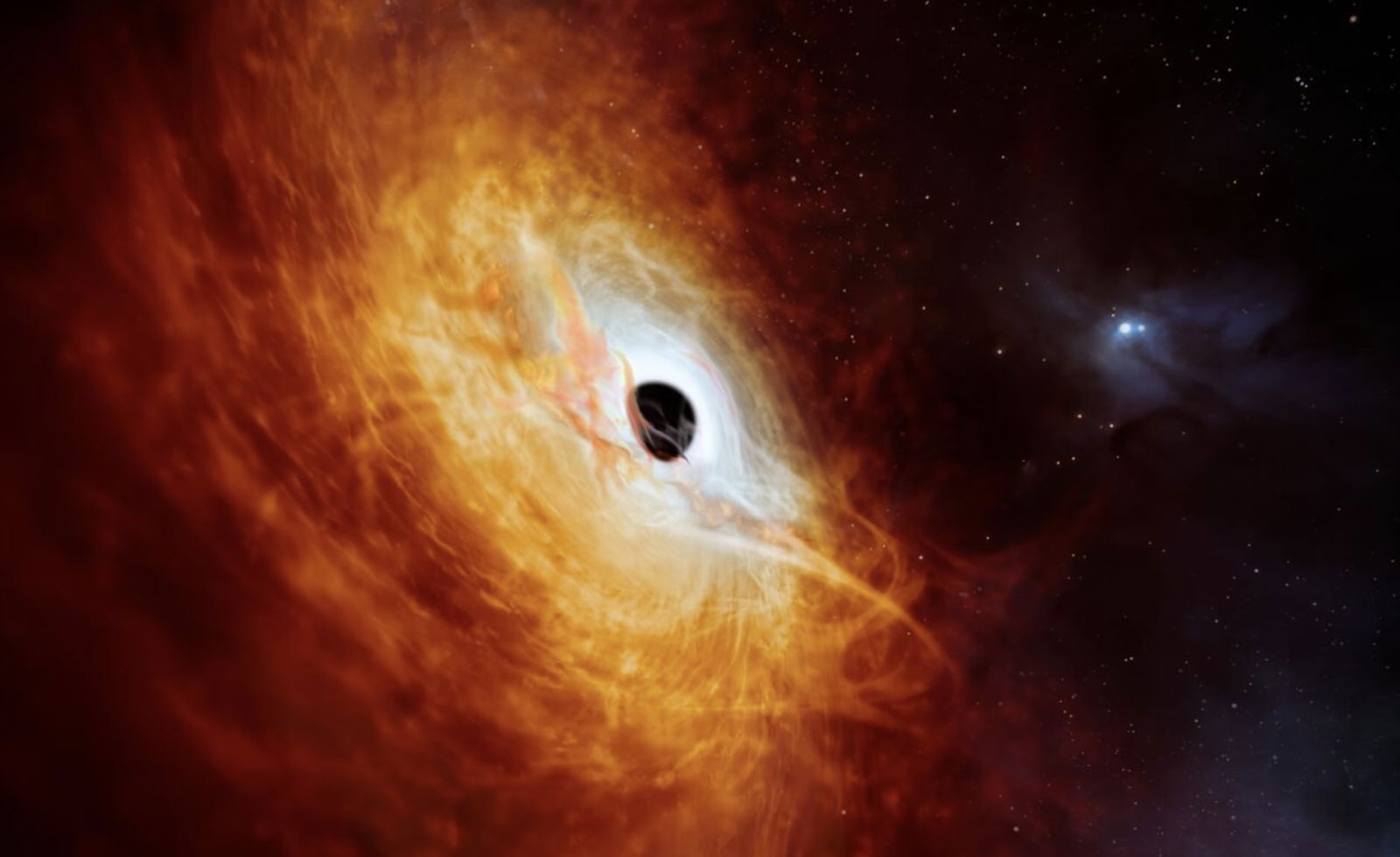An ancient black hole near the galactic center is consuming matter at over 40 times the theoretical limit, raising questions over whether this object and its voracious appetite are defying the known laws of physics.
Designated LID-568, the black hole was discovered by a team led by astronomer Hyewon Suh of the International Gemini Observatory/NSF NOIRLab, who began by analyzing data from the Chandra X-ray Observatory’s COSMOS legacy survey. Hidden within these observations, LID-568, although difficult to detect, appeared as a near-infrared dropout on the spectrum—barely visible except through X-ray observations. Studying such a faint object required help from the ultra-sensitive James Webb Space Telescope (JWST) to capture its dim infrared light.
“Owing to its faint nature, detecting LID-568 would be impossible without JWST,” explained coauthor Emanuele Farina, also an astronomer at the International Gemini Observatory/NSF NOIRLab. “Using the integral field spectrograph was innovative and necessary for getting our observation.”
Pinpointing LID-568’s location with the JWST was challenging due to the absence of strong visible or infrared light. X-ray observations alone did not provide enough detail to accurately target the black hole, prompting the team to move away from JWST’s standard slit spectroscopy, instead employing the telescope’s NIRSpec instrument with its integral field spectrograph which enabled them to gather spectral information for every pixel in the telescope’s field of view.
Analyzing LID-568
Using NIRSpec, the researchers carefully examined the black hole and its environment, discovering powerful outflows of gas surrounding LID-568. The outflows’ tremendous mass and speed led the team to infer that much of the black hole’s growth occurred during a single, intense event.
Based on these observations, the team’s calculations revealed that LID-568 was feeding at a rate 40 times the Eddington limit—a theoretical cap on how quickly a black hole can absorb matter, determined by the balance between gravitational pull and the outward pressure generated by heat energy from compressed matter.
“This serendipitous result added a new dimension to our understanding of the system and opened up exciting avenues for investigation,” commented Suh.
“This black hole is having a feast,” explained coauthor Julia Scharwächter, an astronomer at the International Gemini Observatory/NSF NOIRLab. “This extreme case shows that a fast-feeding mechanism above the Eddington limit is one of the possible explanations for why we see these very heavy black holes so early in the Universe.”
Given that LID-568 is feeding at a rate far greater than what astrophysicists expected to be possible, it raises a challenging question: could this massive black hole be defying our current understanding of physics?
Rethinking Black Hole Formation
Althogh LID-568’s behavior certainly causes us to rething some of our accepted understanding of black holes, that doesn’t necessarily mean that this one is “defying” physics. Rather, its observed behavior presents new insights for astronomers into into black holes that could help expand our understanding of their nature, and how they formed in the early universe.
Current prevailing theory holds that supermassive black holes grow from smaller ones called “seeds.” These seeds come in two main types: “light” seeds, which form from the collapse of early stars, and “heavy” seeds, which develop from collapsing gas clouds. Despite the widespread acceptance of this framework, no direct observational evidence has yet been collected for either type of seed.
“The discovery of a super-Eddington accreting black hole suggests that a significant portion of mass growth can occur during a single episode of rapid feeding, regardless of whether the black hole originated from a light or heavy seed,” Suh says.
While no direct observations of a black hole’s birth exist, this research provides concrete evidence related to black hole formation. Moving forward, scientists plan to investigate how LID-568 managed to exceed the Eddington limit. One possibility is that the outflows represent a release of excess energy from the extreme rate of accretion, and the team is planning to conduct further studies to explore such possibilities using the JWST.
The paper “A super-Eddington-accreting Black Hole ~1.5 Gyr After the Big Bang Bbserved with JWST” appeared in Nature Astronomy on November 04, 2024.
Ryan Whalen covers science and technology for The Debrief. He holds a BA in History and a Master of Library and Information Science with a certificate in Data Science. He can be contacted at ryan@thedebrief.org, and follow him on Twitter @mdntwvlf.

